UNM Over the Years: People, Places, and Events
A Timeline of the University Created by the Course the History of the University of New Mexico (HIST360/560)
- .
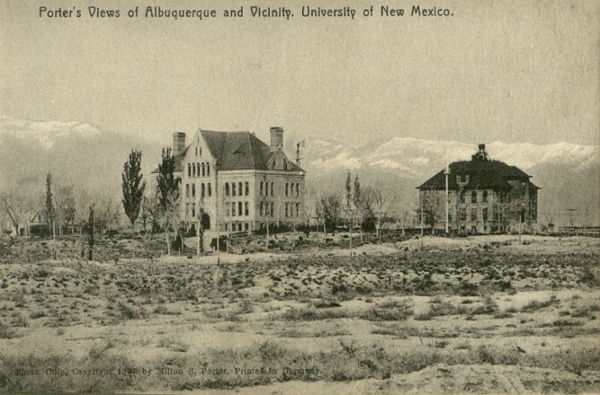
The Founding of UNM
1889
The University of New Mexico was founded on February 28, 1889. These are UNM's few buildings as they stood on the mesa in 1907. In the foreground sits Hodgin Hall, the first building built at UNM. In the early years, Hodgin Hall held all the functions of the university inside it, including the library, classrooms, and offices. One year after this image, President Tight renovated it in what would become the distinctive Spanish-Pueblo Revival style. Milton E. Porter, a specialist in images of New Mexico, took the photograph.
- .
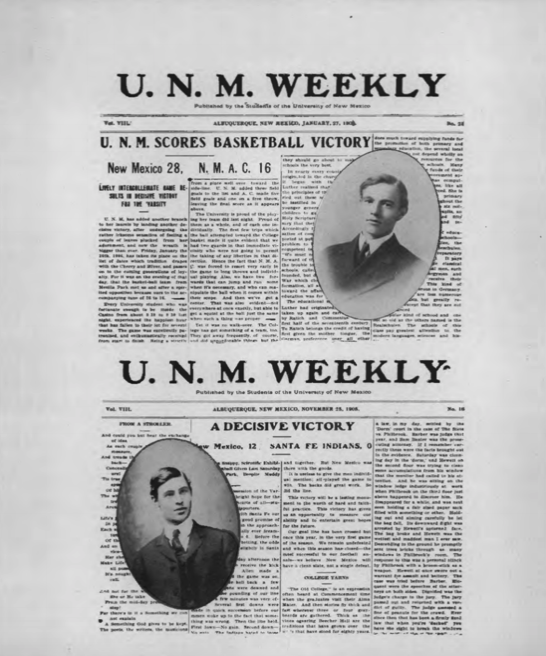
Founding of The New Mexico Daily Lobo Student Newspaper
1895
THE NEW MEXICO DAILY LOBO (1895) donned many faces since it began at the University of New Mexico 125 years ago. The official kickstart to the Daily Lobo came in 1898 when The Mirage began printing. Since then, the UNM independent newspaper has educated students about the campus news happening around them. Today, the paper boasts a circulation of 10,000, making it the third largest paper in the state of New Mexico.
- .
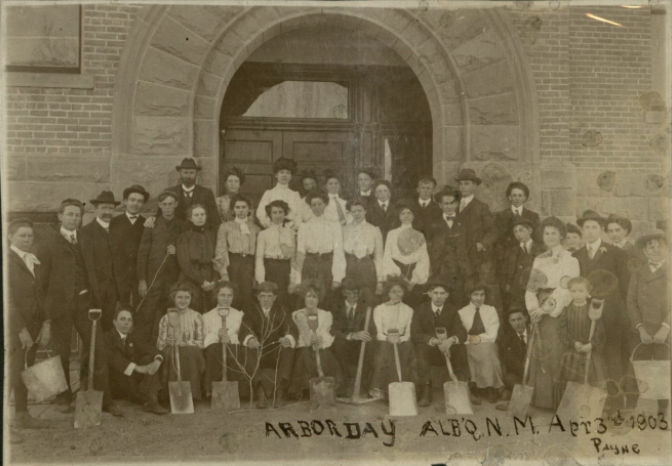
Arbor Day’s Roots in the University Of New Mexico
1905
Arbor Day has promoted a healthy and beautiful campus environment since 1905, when President William G. Tight, with the help of students, planted the first grove of trees alongside Hodgin Hall. Over the years, Arbor Day transformed UNM into the beautiful arboretum that it is today, shading students on their way to campus, cooling and freshening the environment, and inspiring comradery amongst the student body. The varied species of trees covering UNM campus have defined the im-age of UNM and its mission for sustainability achieved through community engagement. Arbor Day is contingent on support through volunteerism and donations
- .
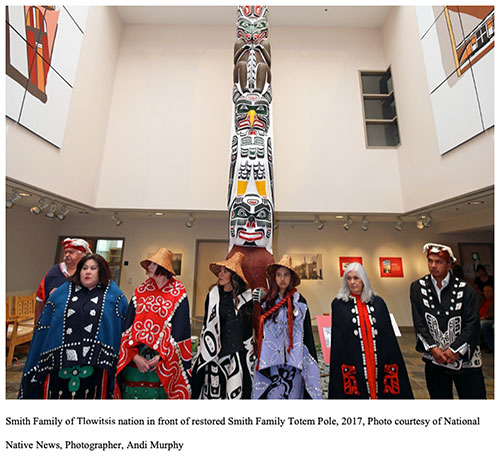
The Smith Family Totem Pole
1907
THE SMITH FAMILY TOTEM POLE (1907 to present) is a striking installation students and staff might pass by daily in the Hibben Anthropology Annex. While seemingly innocuous, the pole has a secret and dramatic history, involving theft and a controversial young Anthropology professor. The totem pole represents a captivating cinematic heist but also is a physical symbol of the queasy, sometimes problematic relationship the University has shared historically with indigenous populations.
- .
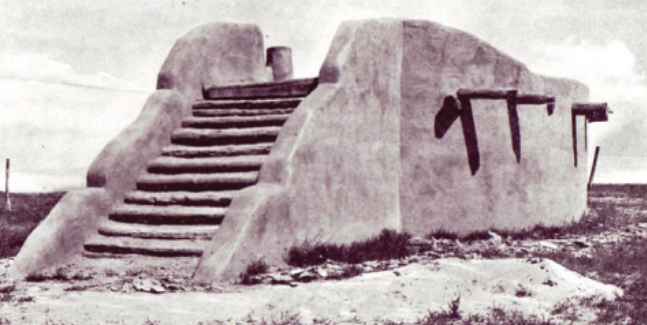
The Estufa
1907
THE ESTUFA (1906-Present) has a very complex history, although only Tri Alphas and Pi Kappa Alpha are allowed inside. The building is surrounded by secrecy due to the fraternal order. No one who is not a member of the fraternity has stepped foot within it; thus, no one knows the secrets that are held within, besides the members of the fraternity.
- .
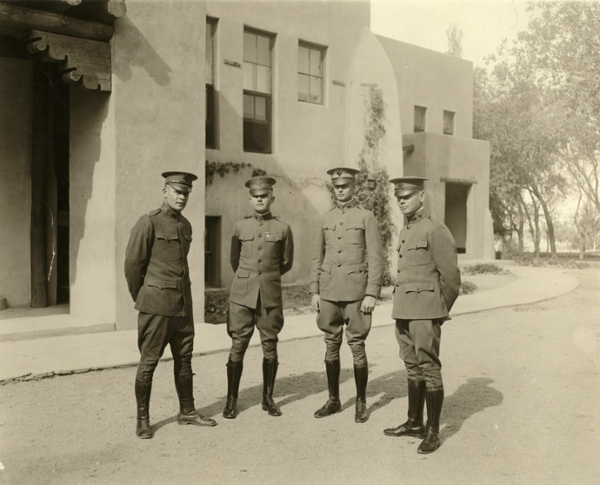
- .
The Lobo Mascot
1920
THE LOBO MASCOT (1920-Present) became the symbol of the University in respect of the animal's cunning, leadership, and prowess. It was suggested as early as September 1920 to be the mascot for the University football team. The lobo spirit grew within Bruno Dieckmann, an alumnus from the class of 1902, who allegedly caught a wild wolf himself to donate to the University for their football practices. In the 1960's, a human mascot with the name of "Lobo Louie" replaced the live wolf. Later on in the 80's, a female human mascot by the name of "Lobo Lucy" stood alongside Louie as a co-mascot.
- .
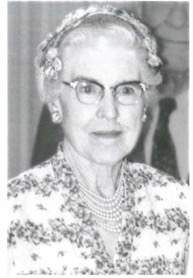
M. Alice Bassett Holloman
1927
MRS. M. ALICE BASSETT HOLLOMAN was the president of the University of New Mexico Board of Regents from January 1927 until her resignation at the end of 1930. For those four years she worked alongside the new President James Fulton Zimmerman, with whom she had a close relationship. Together, they worked to bring a wave of campus development and intellectual progress to the University. She was married to First Judicial District Court Judge Reed Holloman and they lived in Santa Fe, New Mexico.
- .
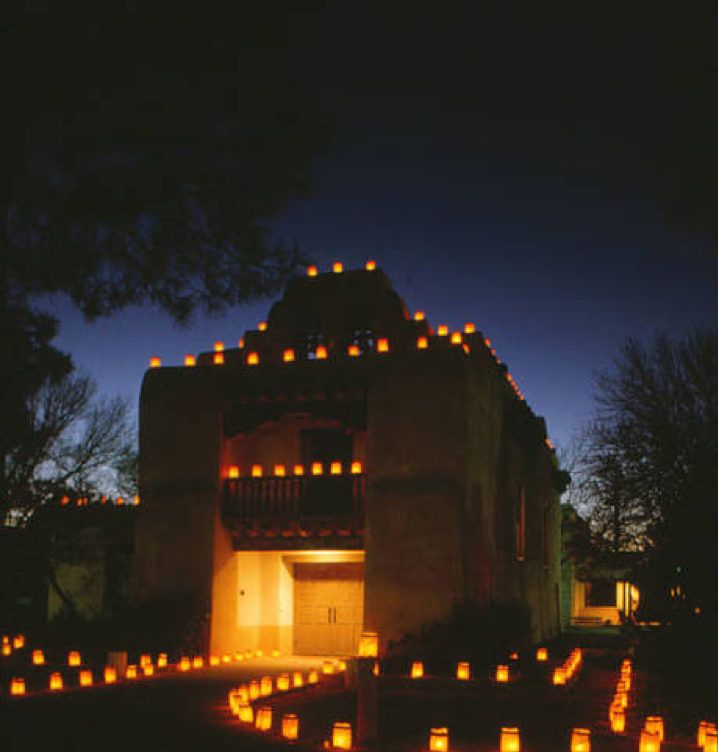
Hanging of the Greens
1930
HANGING OF THE GREENS (1930-present) is the oldest tradition celebrated at the University of New Mexico. On the first Friday of December, student organizations adorn campus with thousands of luminarias. Luminarias, also called farolitos, are paper bags illuminated with a votive candle, and signal the arrival of Christmas in New Mexico. After dusk, students, alumni, faculty, and community members gather at the UNM Bookstore before caroling around campus. The caroling route ends at Hodgin Hall, where the UNM Alumni Association serve free posole and hot cider.
- .
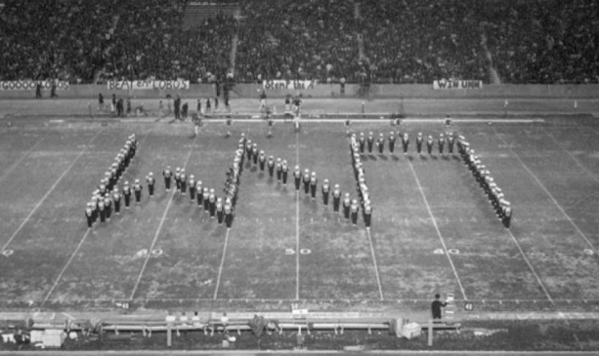
Fight Song
1930
THE UNIVERSITY OF NEW MEXICO FIGHT SONG (1930-Present). In 1930, Dean Clauve, the professor of music education and the Dean of Women, created the rhythm to the Fight Song while Dr. George Clair, professor in the English Department, wrote the lyrics. The original purpose was to raise money to cancel a debt for the school newspaper but it soon turned into the school Fight Song that would unite the UNM community.
- .
Early Social Traditions at UNM
Circa 1930
During the early years of the University of New Mexico, there were many traditions that were set up. These events were a big deal, and both the faculty and the students were happy to share in the festivities. What marked early UNM traditions was that they did not make a clear distinction between faculty and students. Both groups had a very positive relationship at this point in time, perhaps because of the small numbers at the university.
- .
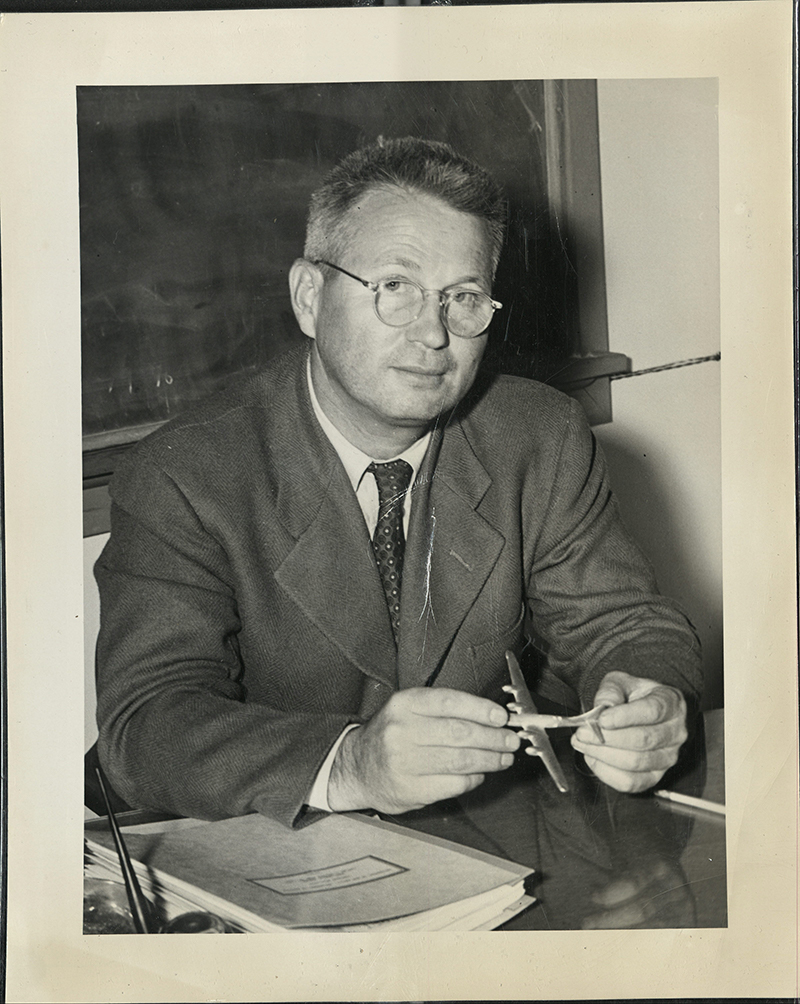
EJ Workman
1933
EJ WORKMAN (1899-1982) worked for the University of New Mexico as a physicist, professor, and Director of Research for the United States Government. UNM hired EJ Workman to be the head of the physics department of the University of New Mexico in 1933, and from there went on to become the Director of Research Projects for the United States Government in 1941. While director, Workman perfected the VT, or proximity, fuse, a fuse that Admiral Lewis L. Strauss credited for saving London from obliteration in World War 2. After retiring from the University, Workman left to study cloud physics at the University of Hawaii.
- .
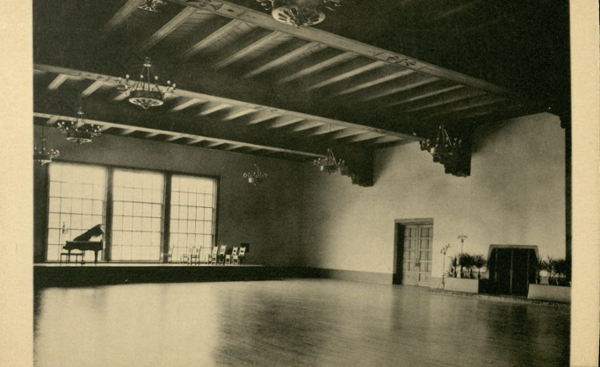
SUB Ballroom
Circa 1936
This is an image of the interior of the old Student Union Building's Ballroom. This building later became the Anthropology Building after the construction of the current SUB. The tin chandeliers and carved vigas were hallmarks of the Spanish-Pueblo Revival style. Laura Gilpin, a renowned western photographer, arranged this photograph. Her work received acclaim at worldwide photography exhibitions, and she had an interest in Native American and Mesoamerican lifeways.
- .
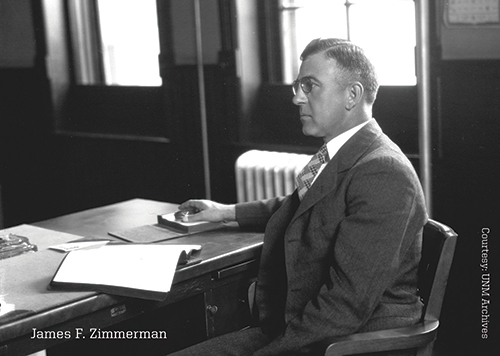
James Fulton Zimmerman
1937
JAMES FULTON ZIMMERMAN ( 1927-1944) Professor of political science and eventually the 7th president of UNM, is remembered as one of the most influential, beloved and impactful leaders that the university has ever seen. During his long tenure UNM underwent exceptional growth. With an increased focus on scholastic programs, including the addition of more graduate studies and research, as well as an "intensive building program" that focused on the campus architecture, Zimmerman helped to shape the university into a modern, unique, relevant power in the southwest, leaving a lasting and extremely impactful mark on the university that resonates to this day.
- .
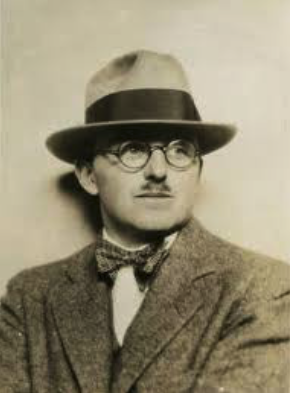
John Gaw Meem
1939
John Gaw Meem was an architect based in Santa Fe, NM, from where he designed some of the most iconic buildings on the UNM Main Campus. He did this by combining the old method of adobe homes and the new methods of building with steel and concrete, creating his own method. His office completed more than 600 commissioned projects over his thirty-five-year career. He was born in Brazil but came to the United States to go to the Virginia Military Institute, but was later diagnosed with tuberculosis, and so came to the dry climate of New Mexico. He survived to become one of the leading architects in Spanish/Pueblo style. John Gaw Meem died on August 4th, 1983, at the age of 88.
- .
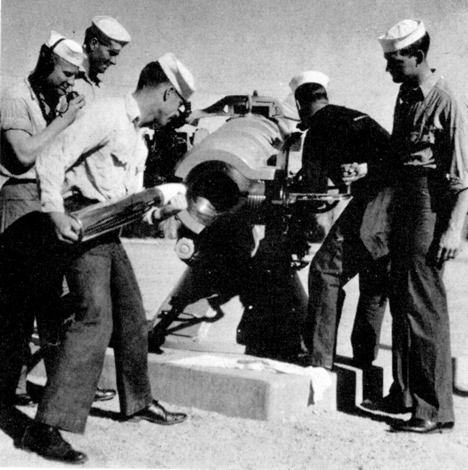
World War II
1939-1945
The University of New Mexico was no exception to World War II as it was one of the schools that was selected to train sailors with its naval ROTC. World War II lasted from September 1st, 1939 to September 2nd, 1945. New Mexico not only supplied Naval officers but also Navajo code talkers, the national guard (who were captured by the Japanese in the Philippines and suffered from the Death March and prison camps), and a place to develop the atomic bombs. As the war progressed, more and more men at UNM went to serve making the yearbooks smaller.
- .
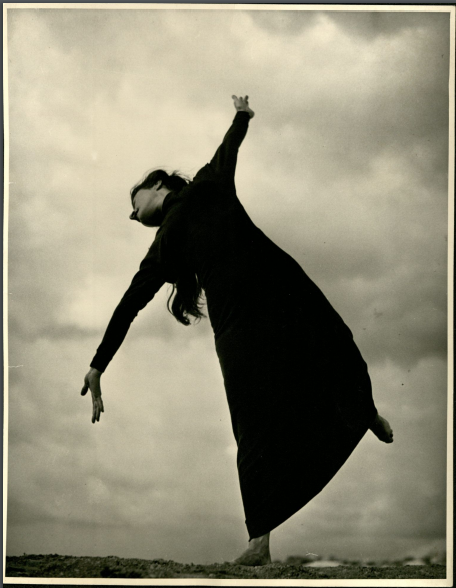
Elizabeth Hannah Waters
1946
ELIZABETH HANNAH WATERS (1910-1993), First Lady of Dance in New Mexico. Waters introduced modern dance to New Mexico and founded the dance program at the University of New Mexico. She took inspiration for her choreography from the Native American cultures near Albuquerque and the New Mexican landscape.
- .
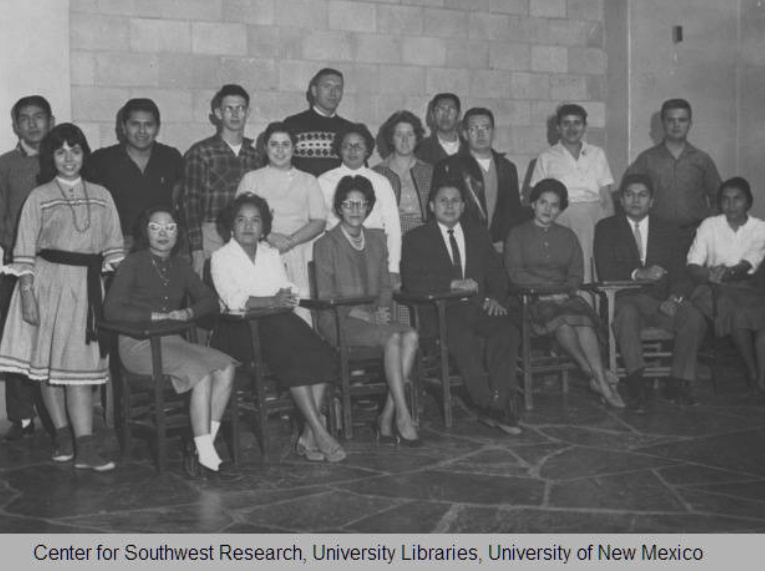
The Kiva Club
1952
In 1952 several Native American Lobos established the Kiva Club, the first student organization for Native American students at UNM. One of the founding purposes of this group was to provide Native American students a vehicle through which to voice their concerns and their views about Native Peoples and Native education at at UNM. Drawing from many different Native American communities throughout New Mexico and the nation, the Kiva Club supported it members on campus, built connections between the many Indian schools in New Mexico and UNM, and promoted higher education for Native Americans nationally. The Kiva club today is now the oldest and largest Native American student Organization on the UNM Campus.
- .
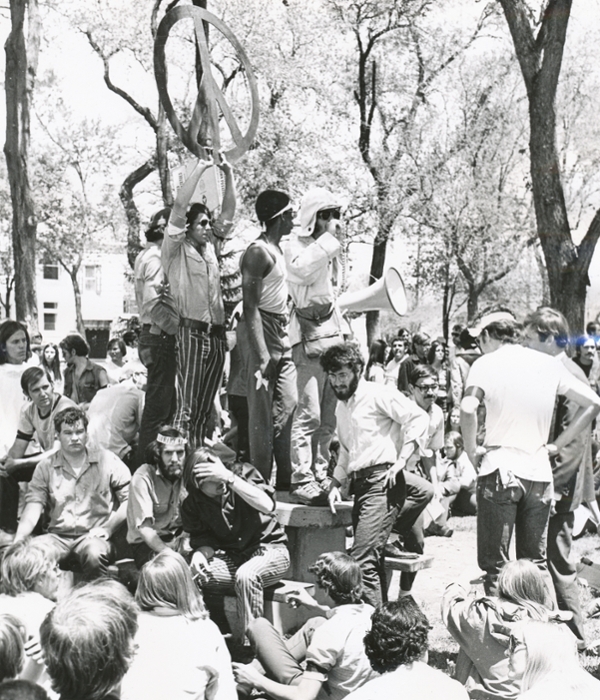
- .
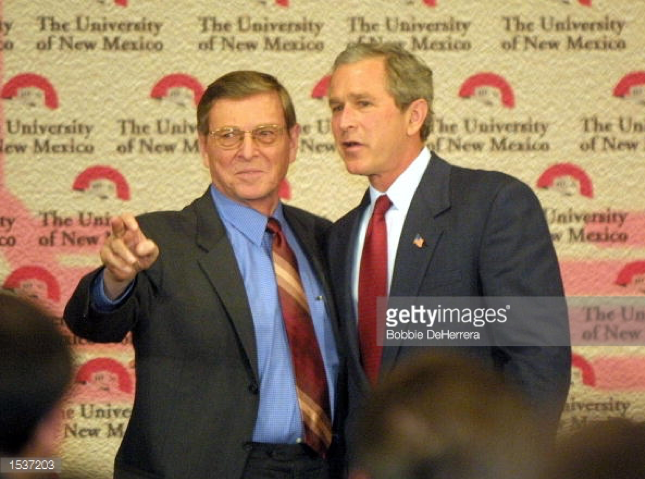
Pete Domenici
1956
PETE DOMENICI (1932-2017) class of 1954, U.S. Senator and a long time public servant. Pete Domenici, a graduate of the University of New Mexico, served as Albuquerque City Commission Chairman and then as a United States Senator for the State of New Mexico. He was the first New Mexican Republican to be elected to the Senate in 38 years. He was a strong supporter of fiscal responsibility, nuclear energy, education, and working across the aisle. He is known for his charisma, open mindedness, and dedication to his state.
- .
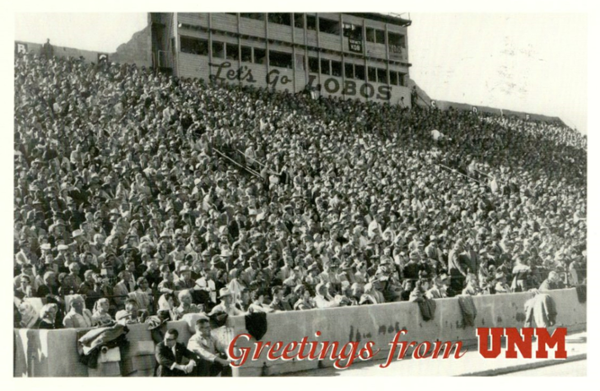
Homecoming
1959
These cheering spectators were at UNM's Homecoming, circa 1959. This photo probably shows the final rally at Zimmerman Stadium, which functioned as the football stadium between 1938 and 1960, when UNM finished University Stadium. At this time the football field sat in the middle of campus, where the Humanities Building and Ortega Hall now stand. That year during Homecoming, the Lobos defeated the University of Denver 42-0, but students continued to lament the ending of the annual parade.
- .
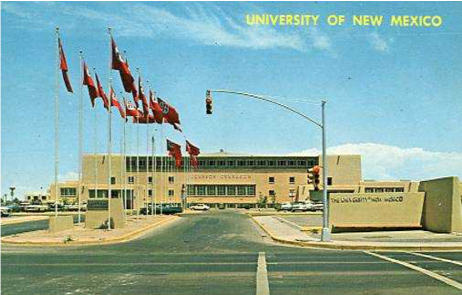
Johnson Gym - Then and Now
Circa 1960
The two photos taken show the similarities as well as the differences between what Johnson Gymnasium was and how it compares to now. The first photo shown is from around the 1960’s when Johnson Gym was the gym where the University of New Mexico’s Basketball team played their home games. The second photo shows the same angle in the present day. There have been major changes since the gym’s construction. Johnson Gymnasium had a parking lot directly in front of the building, right off Central Street, which is now a passage to either side. The UNM Lobo statue that is in front of the building is in the same place as it was when the Johnson Gym opened, despite the drastic change in surroundings. The area surrounding the building has changed nominally, but there has not been much physical change to the actual building itself. Instead, the university constructed other buildings around the original Johnson Gymnasium and attached them alongside the gym. Many of these changes were made to accommodate the increasing population, such as the nearby parking garage that this entrance now primarily leads to. Similarly, when the basketball team moved from the gym on campus to The Pit in order to expand the athletic program, it finalized the change for Johnson Gymnasium to become a facility for students and staff more than a public face for the University.
- .
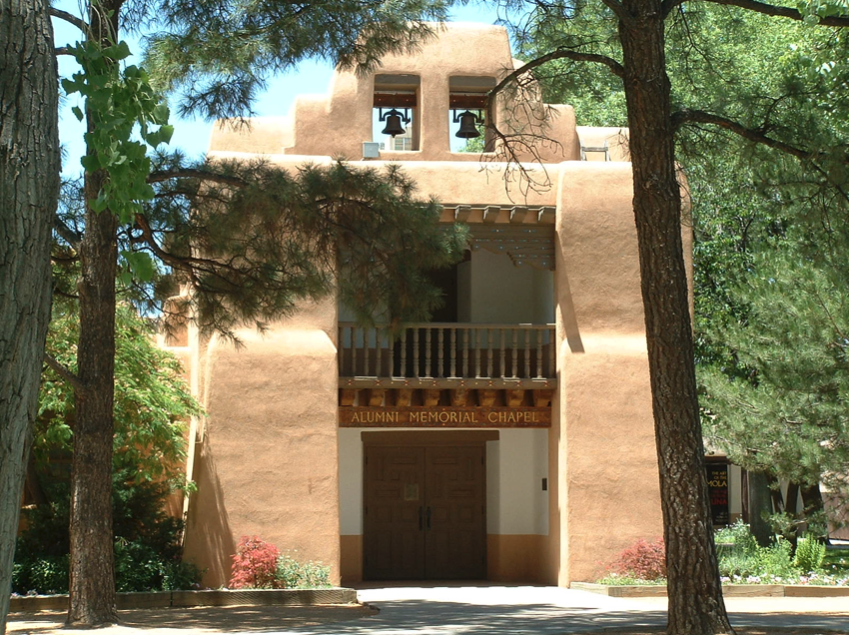
Crossroad of Loss and Inception
1960
ALUMNI MEMORIAL CHAPEL (built in 1960 and dedicated on February 28, 1962) built as a memorial to the fallen soldiers of WWI, WWII and the Korean War. The idea of the Chapel first materialized in 1948, after WWII, as a monument to the soldiers who died in the aforementioned wars. Despite facing over a decade of financial woes, the Chapel was dedicated on February 28, 1962. Shortly thereafter, the Chapel became a sought-after venue for weddings, adding an air of grace to the somber origins of the building. Today the Chapel still holds true to its original intent as well as a beautiful setting for matrimony.
- .
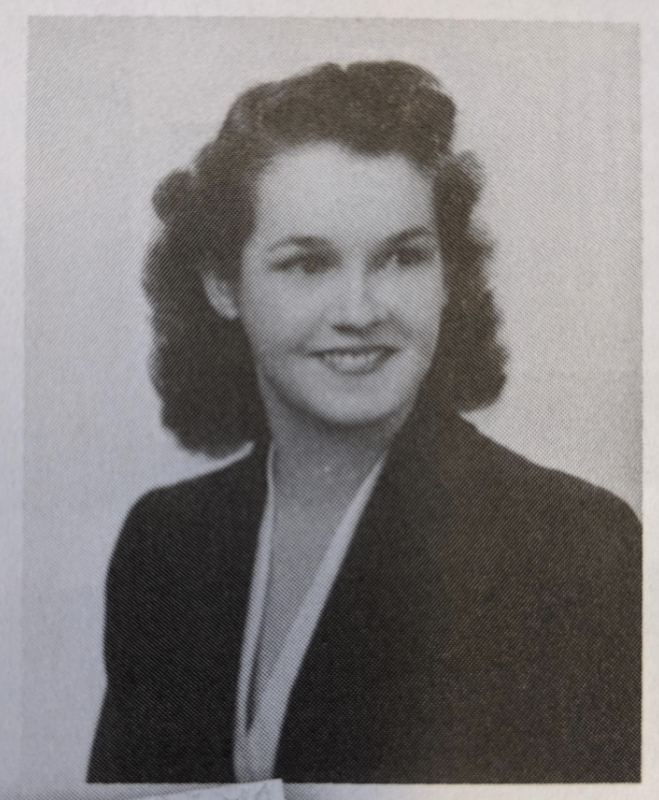
The Honorable Mary Coon Walters
1962
THE HONORABLE MARY COON WALTERS was the first woman named to a New Mexico district court bench and the first woman on the state's Supreme Court. Walters had flown transport aircraft as a member of the Women’s Airforce Service Pilots (WASPs) during World War II. Using her G.I. Bill education benefits, she graduated from the University of New Mexico law school in 1962, as the only woman in her class. Walters served on the New Mexico Court of Appeals from 1978 to 1984 and took her seat on the New Mexico Supreme Court in 1984.
- .
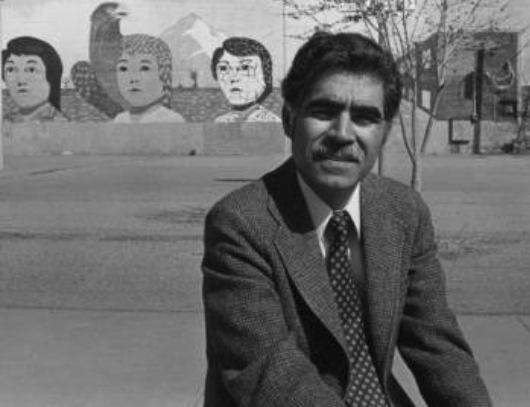
Rudolfo Anaya
1963
RUDOLFO ANAYA (1937-Present) class of 1963, is a writer and professor from New Mexico. He is considered one of the most important figures in Chicano literature, a humble professor at the University of New Mexico. He also is a recipient of two national medals, and an influential writer whose stories have inspired generation after generation.
- .
- .
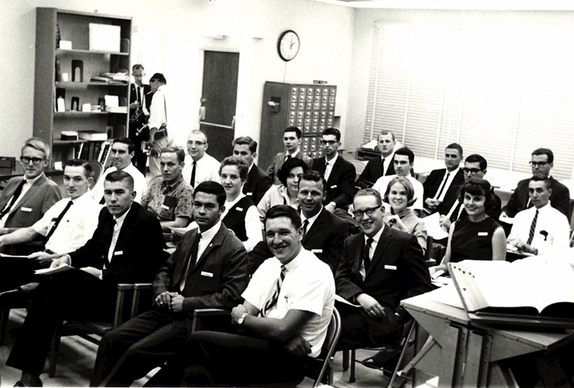
Bringing Medicine to New Mexico
1964
The University of New Mexico (UNM) School of Medicine opened its doors on September 14, 1964. This was the culmination of efforts from countless individuals and an investment on behalf of the entire state. For the first time, New Mexican students were able to obtain a medical education within their home state, and New Mexicans had increased access to medical care. The founding of a medical school represented a turning point for not only the university, but for all of New Mexico.
- .
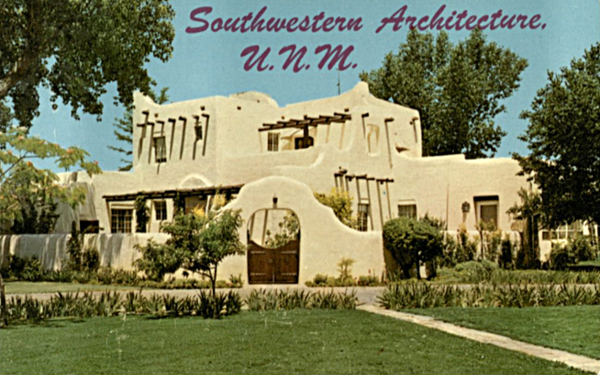
President's House
Circa 1965
This is a close-up of University House, where the President of UNM traditionally stays during their tenure. President Zimmerman's family first occupied the house after its completion in 1930. The building has also been used to host prominent guests and events, and not all of UNM's presidents have lived here. Located near the heart of campus, the house is famous for its Spanish-Pueblo Revival style, and the National Register of Historic Places registered it in 1987.
- .
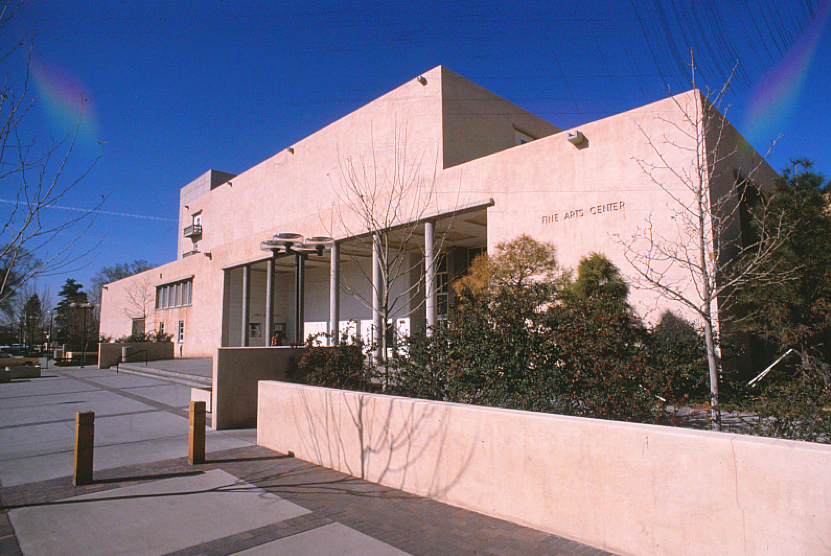
Popejoy Hall
Circa 1966
POPEJOY HALL opened in 1966 after years of conflict regarding its creation. It is named after Tom Popejoy, who spent almost all of his twenty years as President of the University of New Mexico trying to get a performance art hall built on campus. Popejoy Hall's founding was a turning point for the University of New Mexico because of its impact on the State by bringing Broadway and other first-rate theatrical productions to its residents. Popejoy Hall seats almost two thousand people and is the largest venue of its kind in New Mexico.
- .
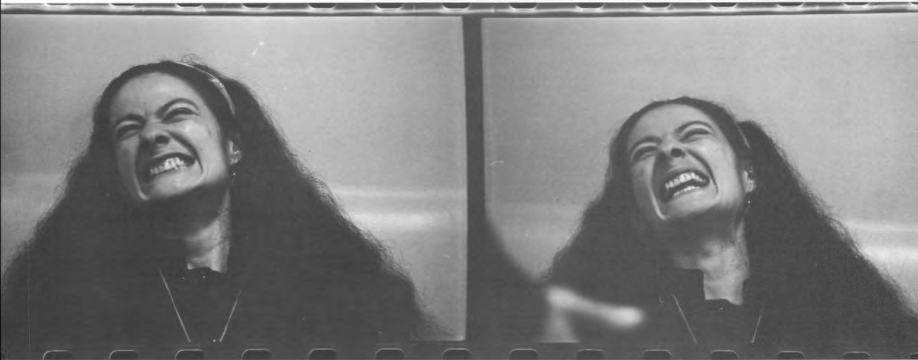
Lenore Kandel’s Love Lust
1967
LENORE KANDEL, poetess and author of “Love Lust,” 1967. The year 1969 was a turning point in UNM’s history because of a controversial poem titled “Love Lust.” Kandel first published her poem in 1967, but the scandal at UNM did not explode until two years later. A graduate teaching assistant used Kandel’s racy poem for an English class. When a student circulated copies of the poem, it caught the attention of administrators, staff, and professors. Due to its vigorous sexual language, many members of UNM debated whether it was appropriate to use in the classroom. The poem provoked responses from student protesters, letters to the editor, and government action. “Love Lust” not only altered campus life but also the wider community through its provoking na-ture. The scandal generated a wide discussion and an evaluation of the UNM institution by gov-ernment authorities. It still resonates in the university today and will probably continue to do so into the future history of the University of New Mexico.
- .
- .

Adolfo Padilla
1969
ADOLFO PADILLA, employee of the Physical Plant of UNM during his college career from 1966-1970. In 1969, an argument over unequal pay and employment opportunities between Padilla and his boss, Myron Fifield. where Padilla noticed these inequalities when comparing salaries with his coworkers of both white and Hispani-American descent, which sparked a long investigation during the height of the Chicano Movement. This ended in late early 1970 when Hispanic-Americans’ work rights began shifting towards equality through riots and strikes, which were sometimes violent.
- .
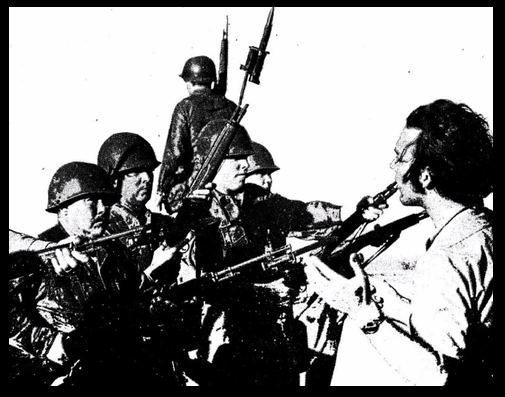
Eleven Bayonetted and 131 Arrested at Student Union Building
1970
The National Guard charged students in the process of vacating the Student Union Building on Friday, May 8th, 1970, injuring eleven. The State Police ordered the charge to enforce a court order, demanding students vacate building. The police arrested 131 protesters and the Guard bayonetted 11 protesters. This event was part of several incidences in which governmental powers utilized the National Guard to quell student protest of the Vietnam War.
- .
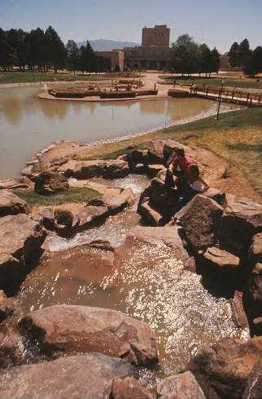
UNM Duck Pond - Then and Now
1977
The original picture, taken in 1977, shows the duck pond shortly after its construction. It is taken from over the top of the waterfall, overlooking the rest of the pond area. Its central location within campus is far easier to see in the original image, as iconic buildings (like the Zimmerman library) can be seen on the horizon. Most notably, the pond lacks any kind of vegetation and looks more akin to a barren wasteland then a communal space where students gather and looks nothing like the natural heaven it was supposed to be.
- .
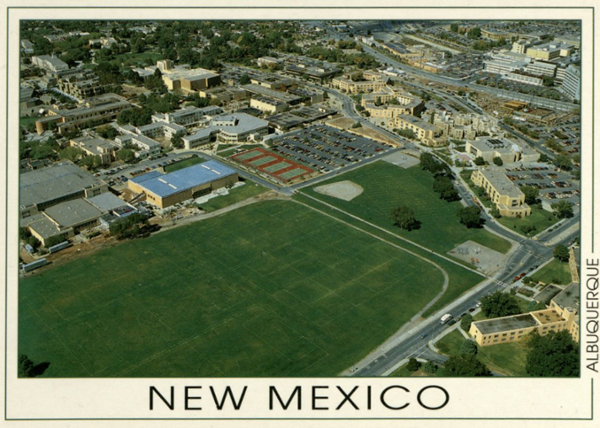
Aerial View of Campus
Circa 1985
Here is an aerial view of Central Campus. It shows the dormitories, with Johnson Gym under renovation. Numerous other developments have happened on this portion of Central Campus since the 1980s. UNM would later re-open Redondo Court (the road headed east from Mesa Vista Hall) and redevelop the baseball diamond, turning it into the Student Residence Center and the Casas del Rio dormitories. The tennis courts still remain, as a legacy of older campus plans.
- .
- .
- .

You Can Miss It
2016
ALMA MATER is a beautiful mosaic made up of colorful ceramic tiles. A student created it in 2016. Over the years, its grown to the size of a lunchroom table. However, for a piece of art this size, a severe majority of the people overlook it as pass by it. So, what is this enigmatic piece of art and what does it mean?
- .

Mexican Student Association (MexSA),
2017
MexSA promotes cultural and academic events related to Mexican history, heritage, and culture. The organization encourages, promotes, and furthers the education of Latino, Hispanic, and Mexican students at the University of New Mexico. Through meetings, volunteerism, and events, MexSA members create a community of support for students. MexSA works closely with El Centro de la Raza to empower, transform, and develop underrepresented and Latino students at UNM. Events that MexSA sponsors are Loteria Night, and the Dia de los Muertos altar blessing.
- .

President Garnett S. Stokes
2018
GARNETT S. STOKES (President of UNM)- Garnett S. Stokes is the current president of the University of New Mexico. After taking office on March 1, 2018, she became UNM’s 23rd President, and made history by becoming its first female president. This has been a significant step for UNM in representing female leadership. Since taking office, she has made an effort to understand what it takes to be a Lobo, but more importantly how to make the Lobo community better.
- .
Present
